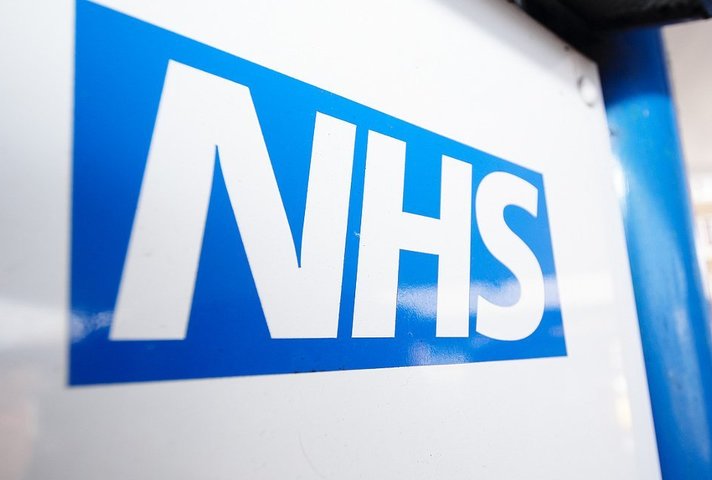Simon Eccles talks to Gill Hitchcock about AI, apps, open APIs and uniting innovative SMEs with clinicians to transform the health service
Credit: Dominic Lipinski/PA Wire/Press Association Images
Simon Eccles is on a mission to streamline the NHS with technology.
His goal is for people’s health information and their pathway through care to be seamless. But he isn’t pretending this is going to be easy. The chief clinical information officer for the NHS, and deputy chief executive of NHSX, says: “The more work I do internationally, the more I am aware that everybody is finding this a challenge.”
Five years from now, Eccles thinks NHS tech may not have changed radically. But in 10 years, AI will have transformed the service. He predicts that natural language processing, demand prediction, clinical decision support tools, and image recognition will be game changers.
“I want to see brilliant products coming out of a combination of SMEs’ drive and clinical brain,” he says. “We need to facilitate them coming together and that is a big part of what NHSX is doing.”
It is three months since Eccles joined NHSX, the body launched in February by health secretary Matt Hancock to drive digital transformation across England’s NHS.
Eccles has frontline experience of NHS tech in his practice one day a week as an emergency medicine consultant at St Thomas’s hospital, London. And he has been joining NHSX chief executive Matthew Gould on visits to services nationwide.
I want to see brilliant products coming out of a combination of SMEs’ drive and clinical brain; we need to facilitate them coming together
“We absolutely understand that one of our principal problems is people’s exasperation with existing technology,” he says. “Far from reducing the burden, it feels like it is increasing it, with very slow log on times, multiple passwords and systems that don’t talk to each other. And we accept that we have a job to do in providing the central drive to help resolve that.”
The countries and areas to have achieved joined-up healthcare are all small enough to use a single supplier, or single infrastructure. Eccles cites Estonia, Latvia, Norway and localities in Scotland as examples.
NHSX, however, has made a deliberate decision not to go for a single supplier, nor new national digital systems. Behind this decision lies bitter experience of the National Programme for IT (NPfIT).
Eccles was part of NPfIT, after it was launched under Tony Blair’s government to revolutionise technology in the NHS. Despite some significant achievements, the programme was fundamentally flawed because of the lack of interoperability of data and systems. NHSX is working to address this.
Whitehall threw huge sums of money at NPfIT. Eccles thinks this changed behaviour across almost every part of the system, and not for the better.
“It meant a reliance on the centre in order to digitise,” he says. “People, by and large, stopped acting unilaterally because the centre was going to do it. It changed behaviour within our supplier market too. Essentially it put prices up enormously. If you announce you have got £4bn to spend, trust me, you will spend £4bn.”
Ultimately, technology was imposed from on high and Eccles believes that in an organisation as large as England’s NHS, this is not the way to digitise.
NHSX arrived with no announcement of a big budget. Change is owned locally. There is room for what Eccles thinks are excellent British small and medium-sized companies: “We want to allow SMEs to come up with brilliance and innovation, then we take that and we publicise it.
“And we are seeing good examples with the academic health science networks, and with the global digital exemplar programmes and some of the fast followers.
“What we have to work out is how we get that into every corner of the NHS, including some areas that have neither the capacity, nor necessarily the people to do that right now. They are going to need help. And my thought is: that help is best provided by aspects of the NHS that have done it successfully, who are perceived as peers, rather than a team from on high.”
The role for NHSX is to build an open API structure that allows others to innovate; ensuring that this minimum functional product fulfils all of the accessibility criteria for audiences who might otherwise be disadvantaged.
Eccles states that the products of big electronic medical record vendors’ products are hard to use, adding that he wishes this was a controversial statement, but it isn’t. Staff have to pulled from work for training. But it doesn’t have to be like that.
“I have seen some brilliant apps that you can put in front of someone and almost first time they understand it,” he says.
“Our challenge is to help free the data and the ability to interface with systems so that we can take SMEs who can design excellent user interfaces that sit on top of that core data, in those core systems.
“My logic is that the ITU nurse, or me as the A&E doctor, or my colleague as the ophthalmic surgeon, are looking at the product that reflects their needs, is easy to use, relatively intuitive and collects the data they want. Behind, it is interfacing with a bog-standard Cerner, Epic, System C or AllScripts.”
Welcome Matt
Matt Hancock’s enthusiasm for tech lit the touch paper of NHSX. He has set his sights on making the NHS the most cutting-edge system in the world for the use of technology. But what happens when he’s no longer health secretary? Eccles admits that he is trying to do the most he can while he has Hancock’s drive. But he is not worried about the future: there is a pressing need to digitise; a need that comes from NHS staff.
And here’s a significant aim: NHSX wants to get a chief information officer or clinical chief information officer on every trust board in England. The idea is that every part of the NHS takes the need to transform using digital technology very seriously.
While Eccles accepts that this is an aspiration, he adds: “I hope we are triggering a conversation in every organisation. Those that are really enabling transformation – the Royal Free and Imperial might be good examples – have always had that message and been running at that level. This is not the IT department in the basement talking about computers. This is the entire organisation, CEO onwards, understanding how technology can transform their business.”

When Eccles (pictured right) is asked about funding, his immediate reply is short: “It’s frankly not enough.”
He is aware of many organisations across England that are already seeing this benefit, mentioning in particular West Suffolk and Milton Keynes. In 2017, the latter introduced the Ryalto app. It means staff can access an e-rostering system and book shifts via their mobile phones. Significantly, it has contributed to a reduction in staff turnover and a 50% cut in agency staff costs – equating to a saving of £10m a year.
Eccles says that every NHS clinician from any clinical background he talks to will immediately give him three ways technology can make their lives better, but often has no route to make that work.
“If we segment this up, I think it becomes very easy for clinicians to have their good ideas reflecting quickly in a product that meets their needs,” he says.
“And consequently, job satisfaction goes up, burden goes down and the understandable challenge to our clinical staff that technology is a pain to use disappears. Everybody wins. This is not a quick journey, but that is what we aim to do.”



